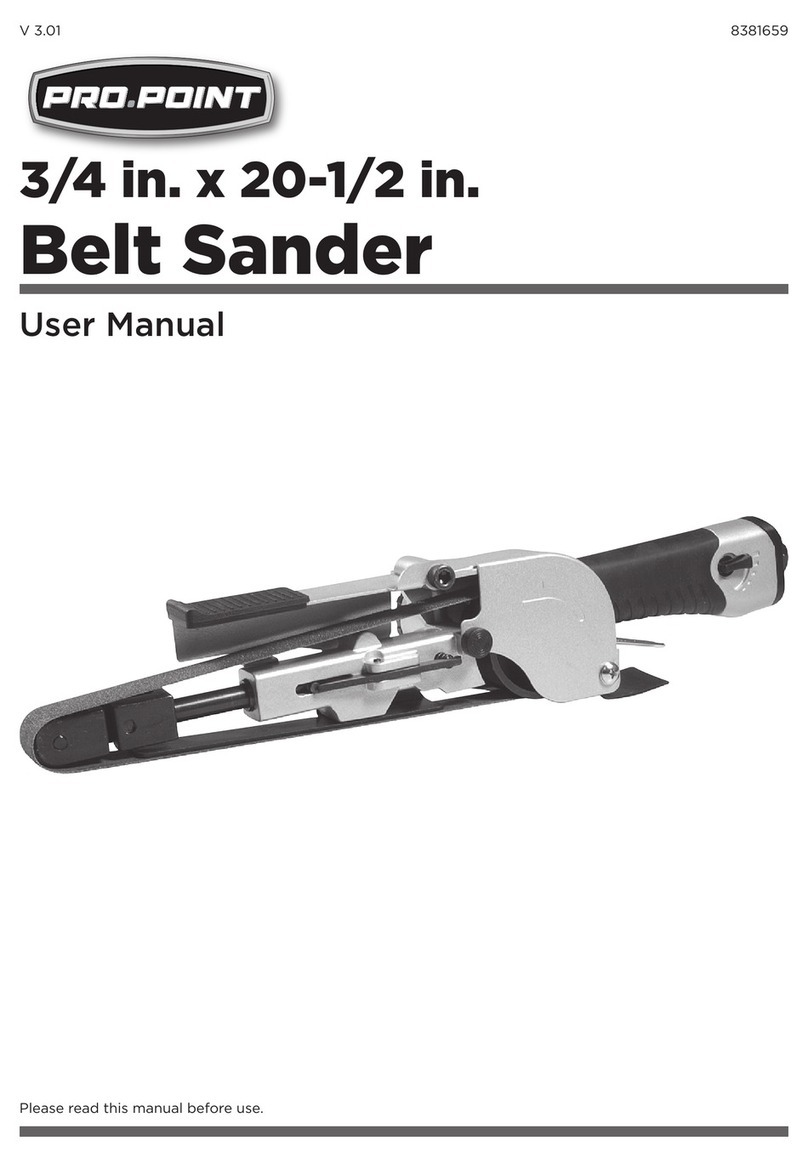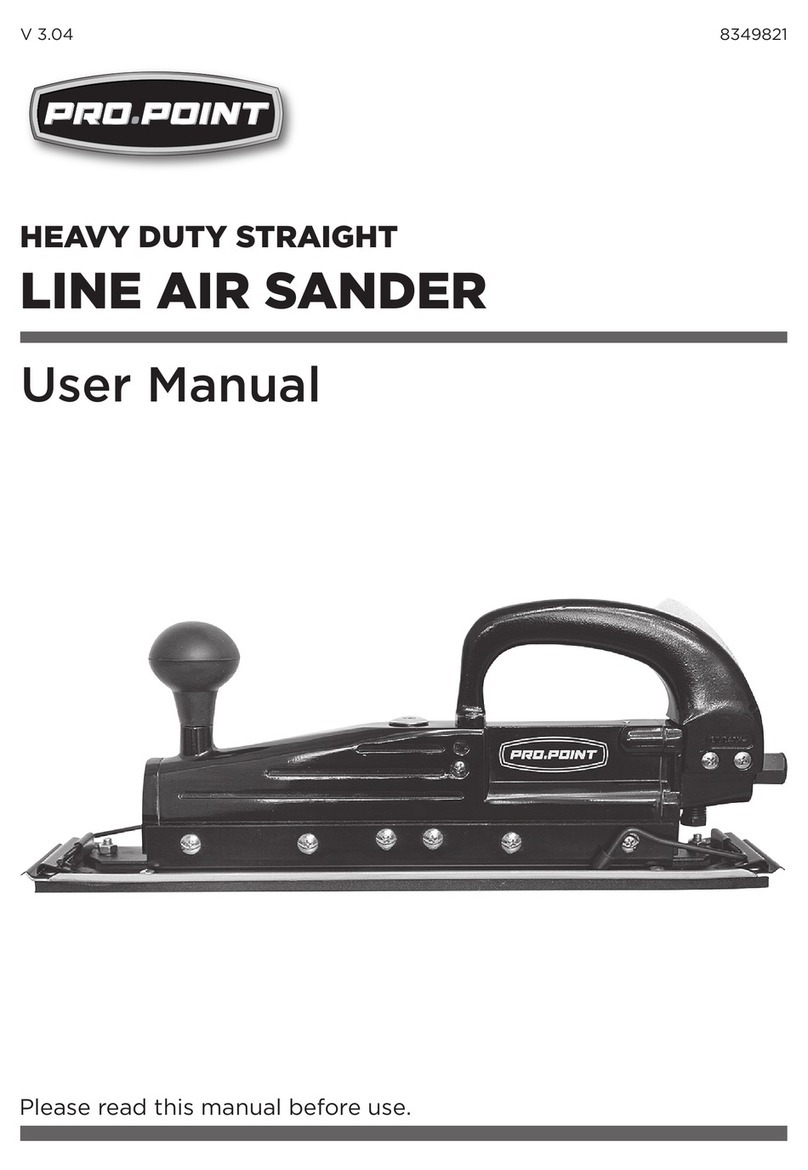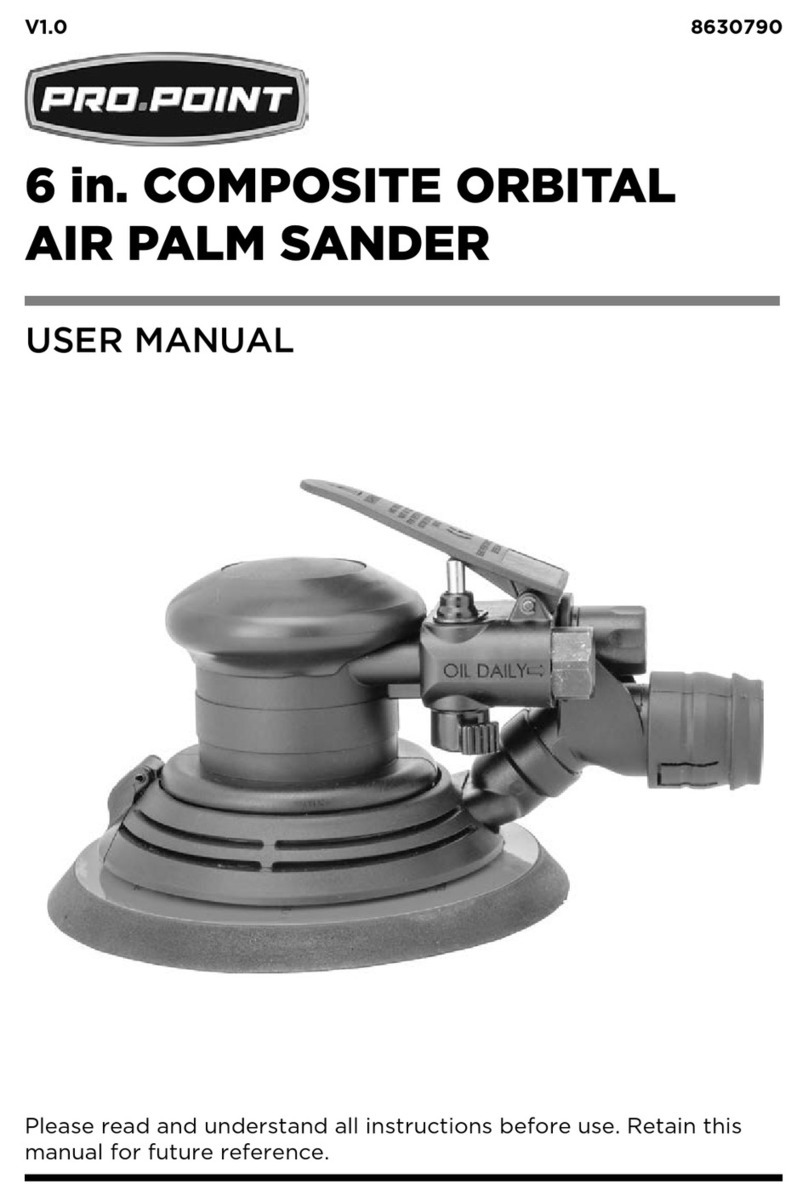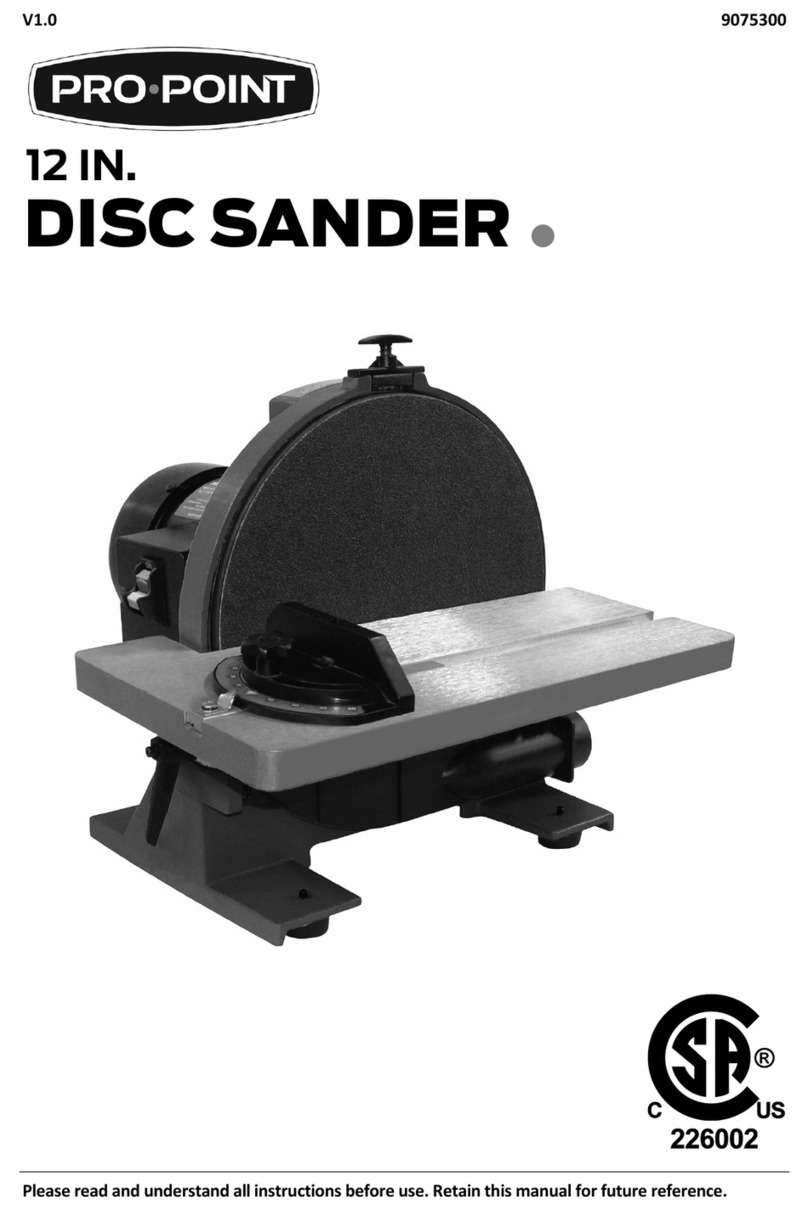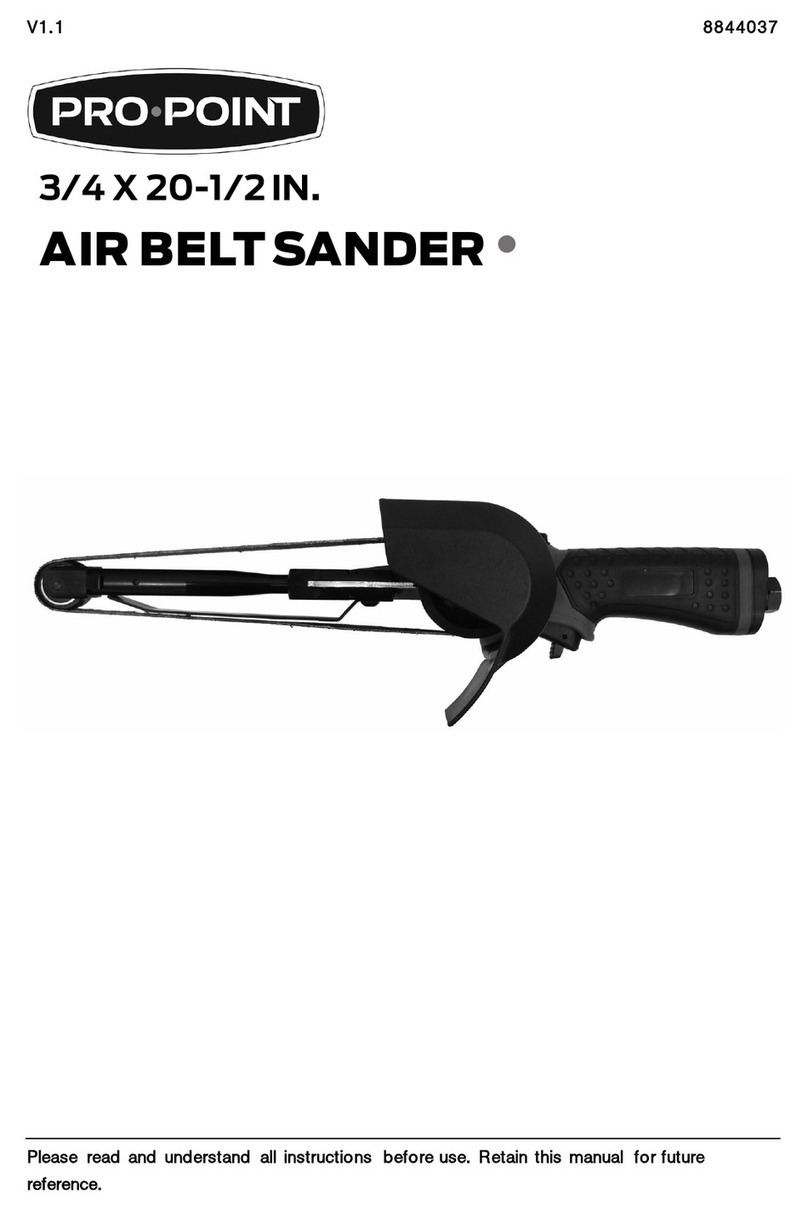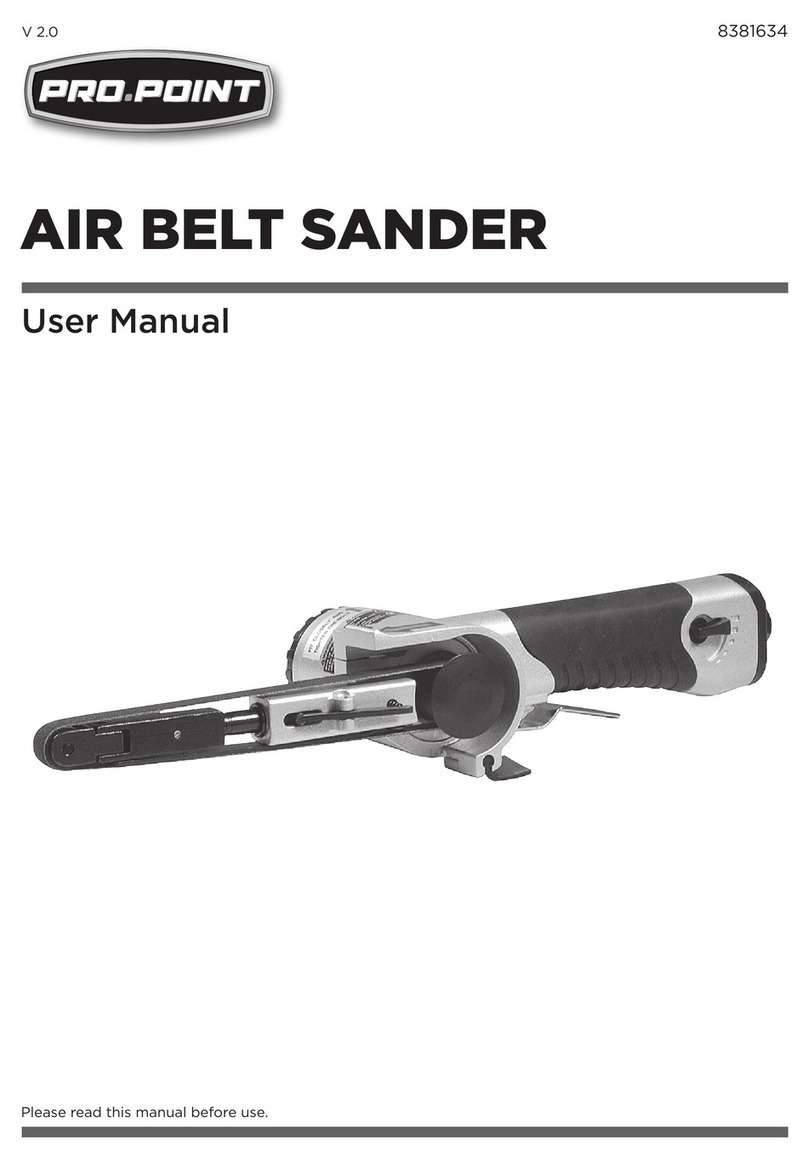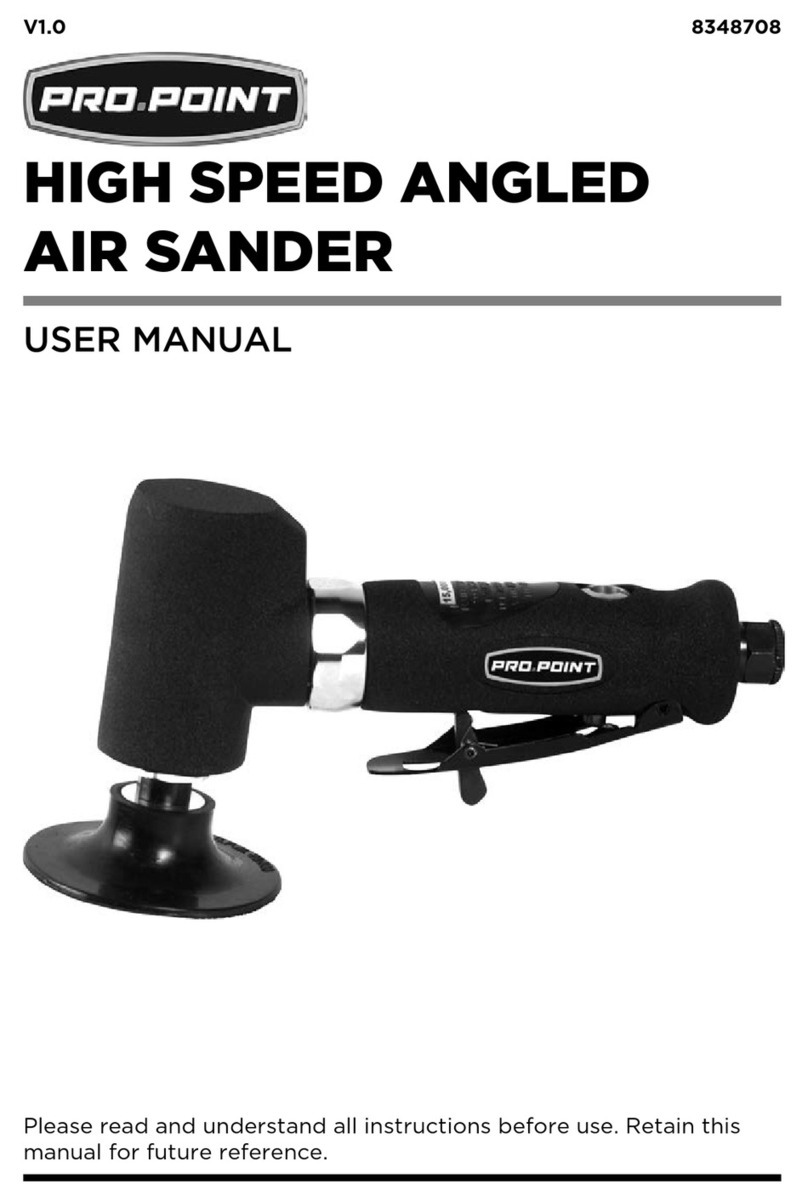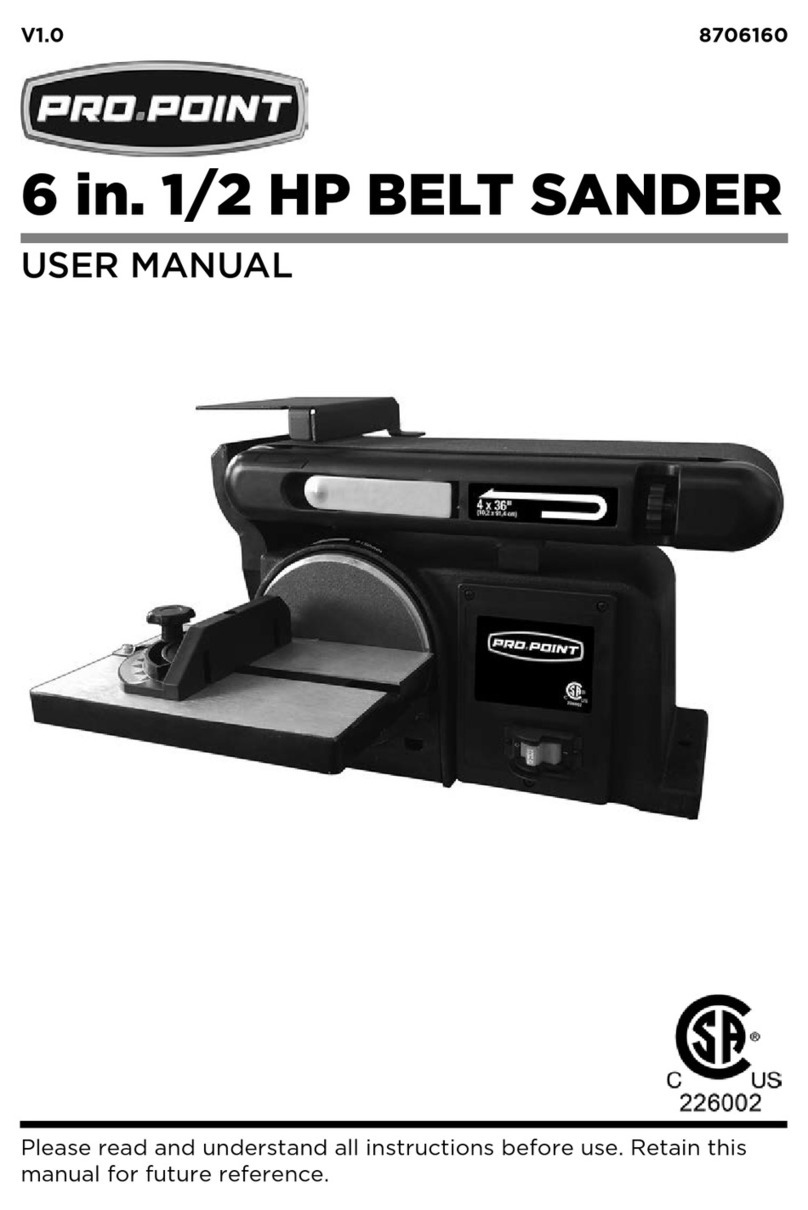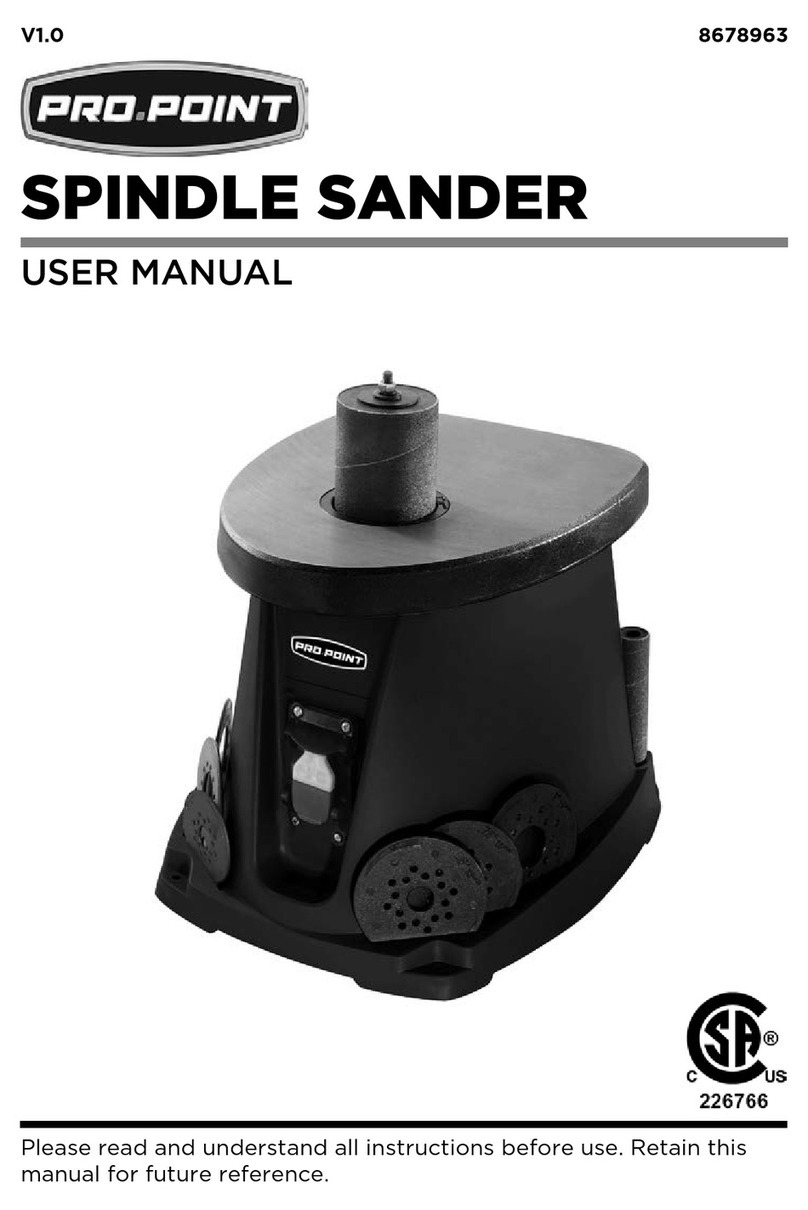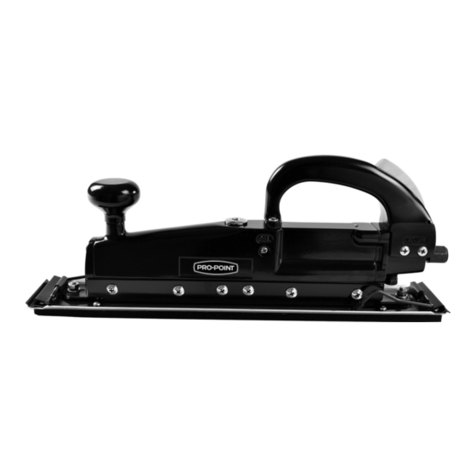
V1.0 6 in. Random Orbital Air Palm Sander 8844193
Visit www.princessauto.com for more information 5
SPECIFIC SAFETY PRECAUTIONS
WARNING! DO NOT let comfort or familiarity with product (gained
from repeated use) replace strict adherence to the tool safety rules.
If you use this tool unsafely or incorrectly, you can suffer serious
personal injury.
1. Use the correct tool for the job. This tool was designed for a
specific function. Do not modify or alter this tool or use it for an
unintended purpose.
2. Do not use the tool if any parts are damage broken or misplaced.
Repair or replace the parts.
3. Do not use any power tool with a malfunctioning power switch or
control. A power tool that fails to respond to the controls is dangerous
and can cause an injury. A qualified technician must repair and verify
the power tool is operating correctly before it can be used.
4. Never use a tool with a cracked or worn tool accessory. Change
the tool accessory before using it.
5. Do not cover the air vents.
6. Only use accessories that are specifically designed for use with the
tool. Ensure the accessory is tightly installed.
7. Only use an accessory that exceeds the speed rating (see
Specifications).
8. Disconnect the power source before installing or servicing the tool.
9. Before using the tool on a workpiece, test the tool by running it at
the highest speed rating for at least 30 seconds in a safe position.
Stop immediately if there is any abnormal vibration or wobbling.
Check the tool to determine the cause.
10. Never force the tool. Excessive pressure could break the tool,
resulting in damage to your workpiece or serious personal injury.
Excessive pressure is the cause if your tool runs smoothly under no
load, but roughly under load.
11. Keep hands and fingers away from the work area. Any part of the
body contacting the tool’s working parts could result in an injury.
12. Do not place the tool down until the tool’s accessory has stopped
moving. The accessory may catch the surface of work material and
wrench itself free, causing injury to the user or others in the work area.
